Read our guide on identifying and removing cannabis pests naturally and for good.
Whether you are growing cannabis indoors or outdoors it is important to observe and monitor your plants for insects, as just like any crop, cannabis has its own enemies, and as a grower you will one day encounter a pest. Unfortunately, some of these pests we will go through here are known to destroy a crop quickly if not found early enough. They are not always easy to spot at first yet overtime you will learn the telltale signs of pests, the damage they create, and how to properly control them.
Quarantine
The first step to a pest free facility is to quarantine your plants upon arrival. All plants entering a building or grow area should be inspected upon receipt to determine if there are any existing pest problems. After the inspection, the plants should be quarantined for a minimum of two weeks. This space will need to be a separate room from other production areas.
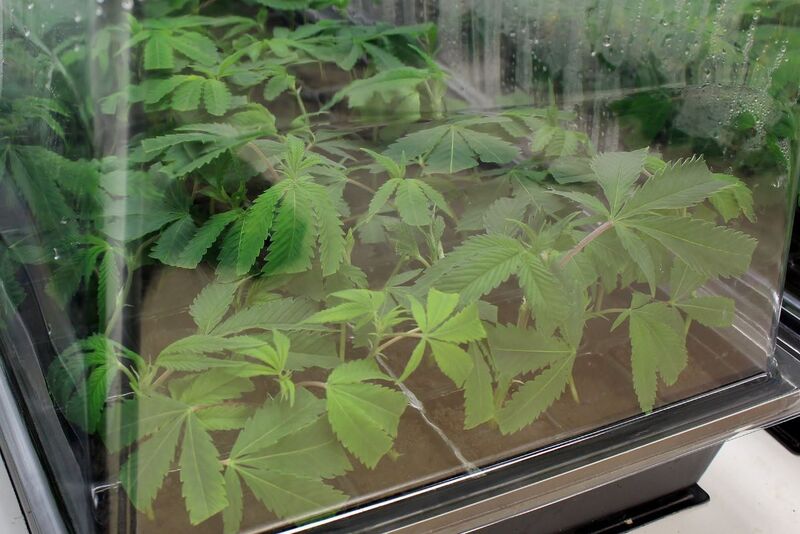
Monitoring
During the quarantine stage and after, monitoring will be a grower’s most valuable tool. Horiver cards and walk-throughs need to be counted and performed on a weekly basis. This is important for a few reasons:
- Horiver cards will allow you to observe what is flying around (or in your crop) months to weeks before damage or pest pressure can be seen with the naked eye. These flying insects can include thrips, whiteflies, aphids, and sciarid flies (fungus gnat/shorefly).
- You will be able to see pest population trends. These trends will allow you to determine if your pest population is decreasing or increasing over an extended period.
- Weekly crop inspections will allow you to determine where hot spots are located and if they are spreading or remaining under control (once biologicals have been applied).
- In walk-throughs you should actively check the soil, stems, and leaves, while performing “leaf flips.” These leaf flips are important, as most pest infestations begin to develop on the undersides of leaves.

Pests and Biological Products
Spider Mites
Most mites found in a cannabis crop are the Two Spotted Spider Mites (Tetranychus urticae), though they can be miss-identified due to color variation. This color variation is primarily caused by the flowering photoperiod that occurs in the flowering stage of the cannabis production cycle. This stage triggers a portion of the population to turn a red/orange/purple color as they go into diapause (hibernation), where a non-diapaused Two-Spotted Spider Mite can be easily distinguished by having two large dark spots on its back and red eyes.
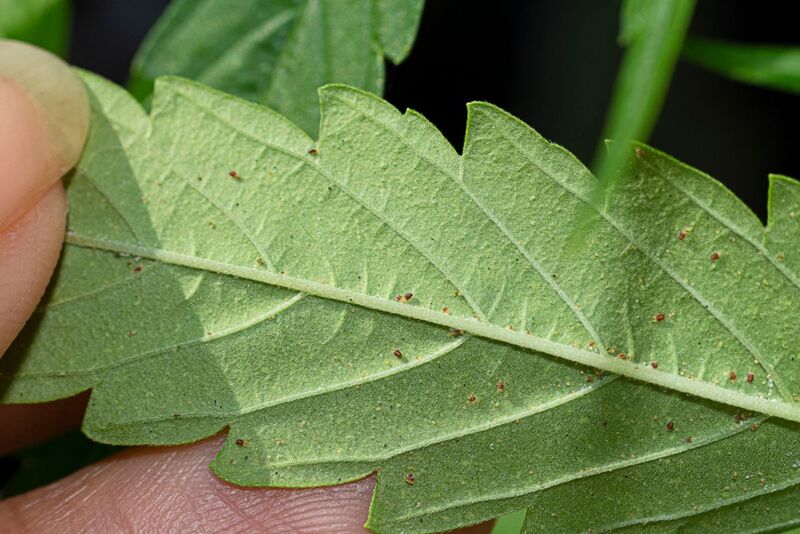
Spotting spider mites in a cannabis crop at first can be difficult. Infestations usually begin on plants near walls, posts, or doors. Initially the damage will start off as small yellow speckles, rapidly turning into severely damaged leaves with a major amount of webbing. This can quickly kill a plant due to the lack of photosynthesis.
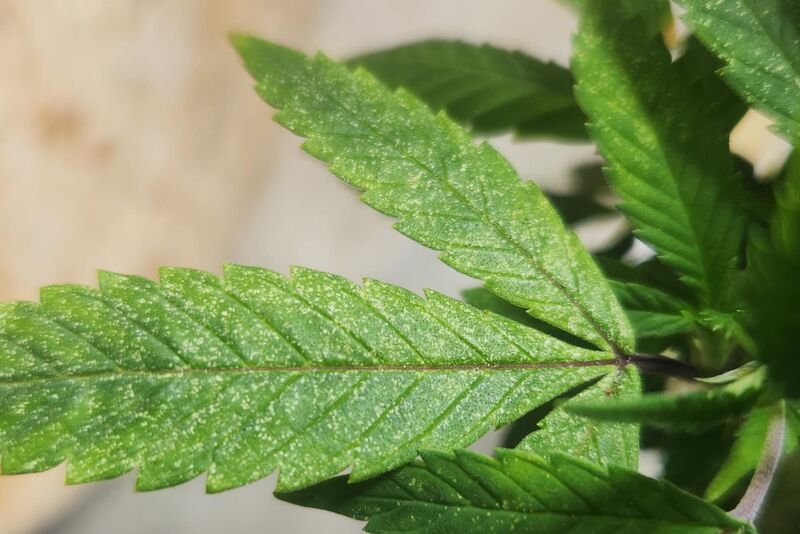
We use two different predatory mites for the control of Spider Mites in a cannabis crop. The first being Neoseiulus californicus, found under our product name Spical. Spical is best used in the Ulti-Mite sachet form and as a PREVENTATIVE. The sachets will slowly release these predatory mites in the crop for up to four weeks. They will actively search for spider mites, migrating over plants if they are touching, as well as walking along the ground. They will use volatiles emitted by spider mite damaged plants for cues to find its prey.
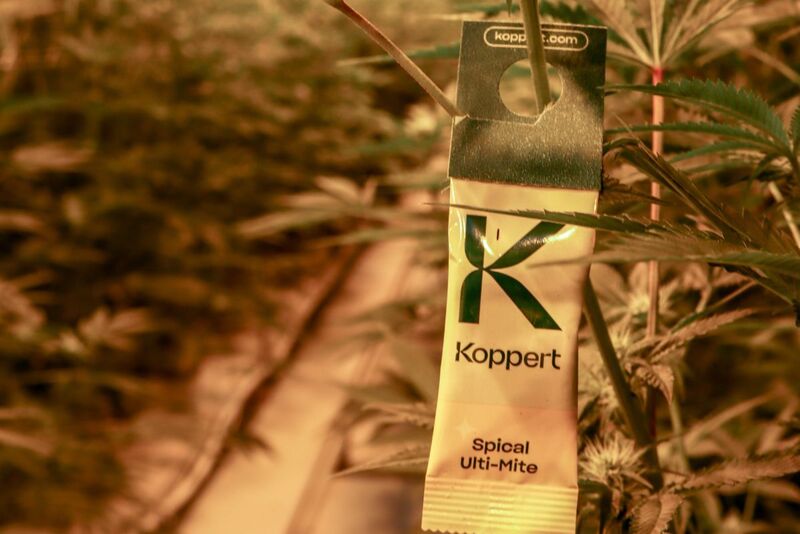
The second predatory mite we use is Phytoseiulus persimilis, found under our product name Spidex. There are two Spidex formulations that can be used in cannabis – Spidex Vital or Spidex Red. Spidex Vital is best used in the Spidex Vital Plus form and as a PREVENTATIVE or LIGHT CURATIVE, where slow sustained control is needed. Spidex Red is best used in the Spidex Boost formulation and as a CURATIVE, where a rapid response is required.
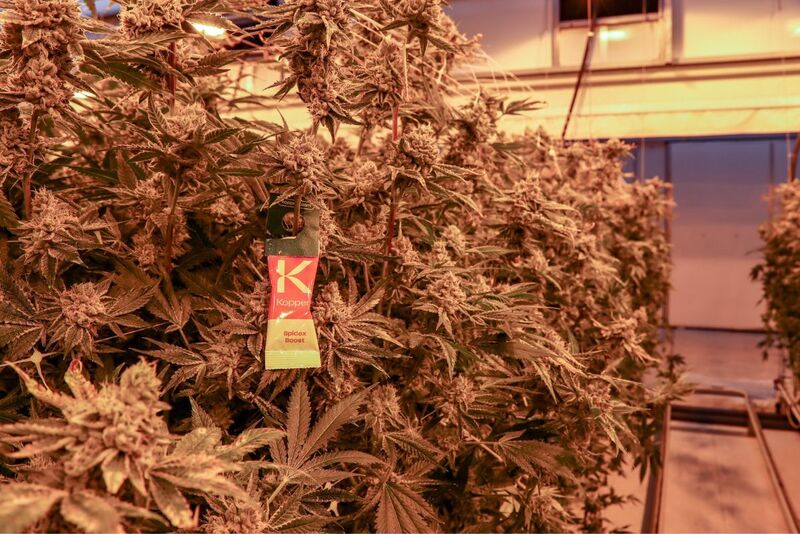
Note: The Spidex Boost sachets are not breeder sachets, however they will instantly release 100 predatory mites into the field per sachet placement, as well as keep the crop clean from unwanted loose carrier material. Spidex will only feed on spider mites, so an active spider mite population will need to be in the crop for this predatory mite to survive.
Thrips can first be noticed on Horiver cards, and if actively walking your crop, you will begin to see signs of stippling on the leaf surfaces, silvering on leaves from older feeding damage, and black frass (fecal matter). The most important reason to remove thrips from your grow room is the indirect damage they cause by acting as vectors, transmitting diseases between plants.
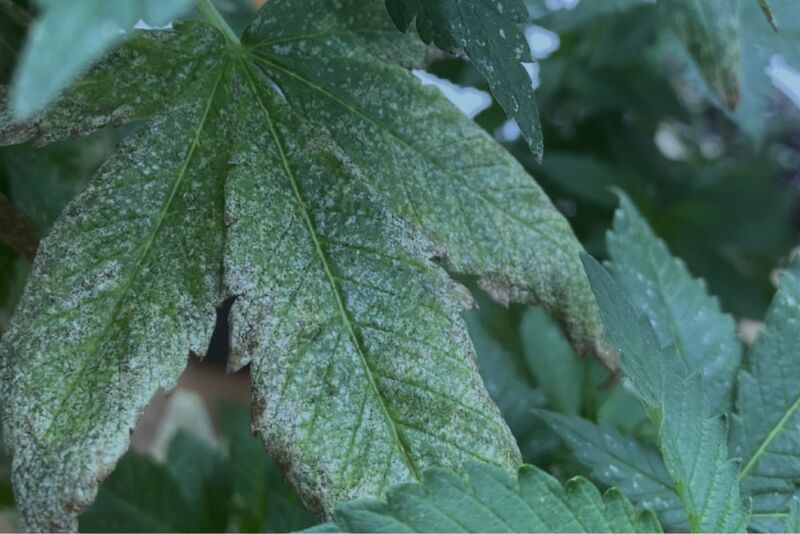
95% of thrips found in cannabis crops is a common thrips species, called the Onion Thrips (Thrips tabaci). These thrips will be yellowish-brown in color and averaging a length of 0.8-1.2mm long.
To control thrips in cannabis we use multiple biological controls; this is particularly due to their life cycle. Our Swirski Ulti-Mite product (Amblyseiulus swirskii) is used when growers want to treat PREVENATIVELY or LIGHT CURATIVELY.
Note: Generalist predatory mites will only feed on 1st instar thrips larva and eggs. That is why they are best used in conjunction with other products including, Thripor and Entomite.
Thripor is the predatory bug Orius insidious. It is considered a generalist predator with the preference for all active life stages of thrips. It will react to any movement rapidly, piercing the thrips body with its mouthparts, consuming it whole.
The third and final product to use is our Entomite product. It is the soil-dwelling predatory mite Stratiolaelaps scimitus. This predatory mite will feed on the thrips pupae that pupate in the soil. With all three actively working together in a cannabis crop, your thrips pressure will decrease rapidly over a few weeks.
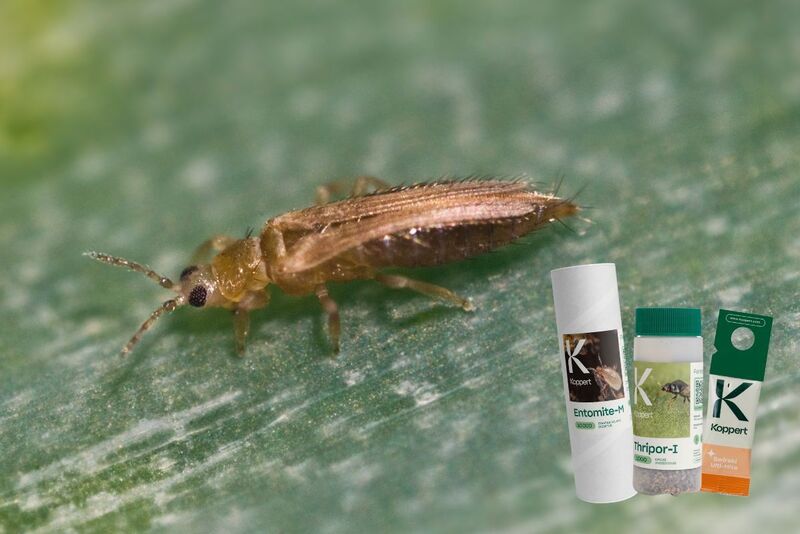
Sciarid Flies (Fungus Gnats)
Adult sciarid flies can be a nuisance and are easily spotted in the crop when working in your growing medium. They are 1-5mm long, are greyish-black, and have two long antennae. These flies do not cause plant damage, instead it is the larva feeding on plant roots that causes grief. The larva can be identified in the soil by their brownish-black head capsule. They will also be cylindrical, milky white to opaque, and have 12 body segments.
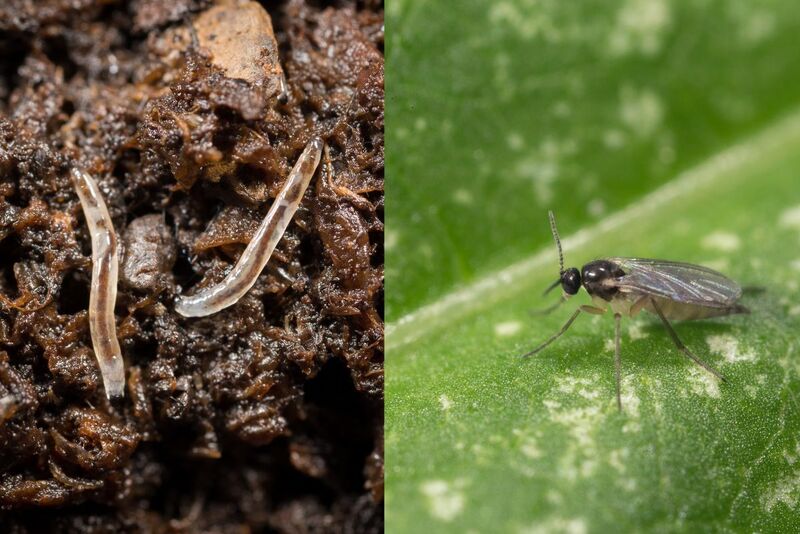
Multiple biological products can be used to treat this pest. Initially, we always suggest placing yellow Horiver cards near the soil line, as these cards will capture mass amounts of sciarid fly adults. Removing adults from your crop will decrease the number of eggs laid, reducing the development of larva. The larva then can be treated with the soil dwelling predatory mite talked about above - Entomite (Stratiolaelaps scimitus). If you notice a large influx of sciarid fly larva you can also treat with the product Entonem (Steinernema feltiae). Entonem is a nematode that will lay inactive in the soil when applied until a sciarid fly larva wiggles by. It will then attack, ambushing its prey. Entonem is known to work best when applied with Entomite.
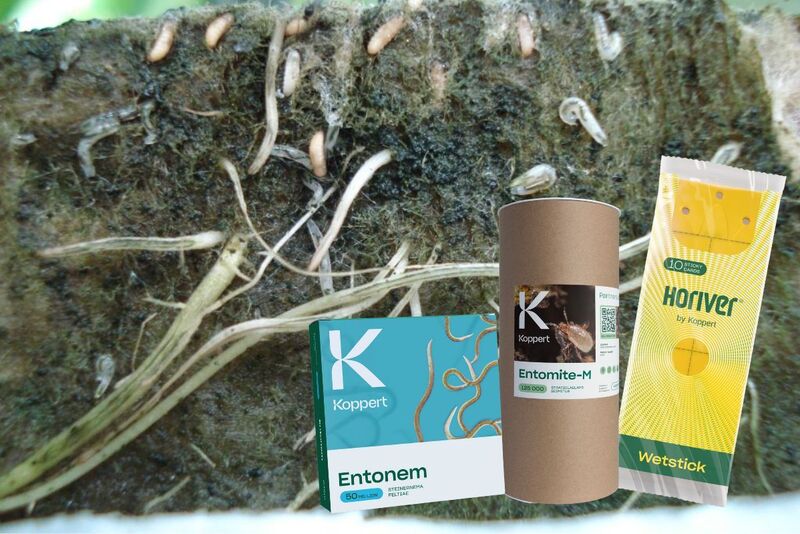
Cannabis Aphids
Phorodon cannabis (the Cannabis Aphid) will be one of the most difficult pests a cannabis grower experiences. Due to their short generation time and rapid reproduction rate an aphid population can reach serious levels promptly. Each aphid will begin extracting plant sap, secreting honeydew, and introducing toxic substances as soon as they are born.
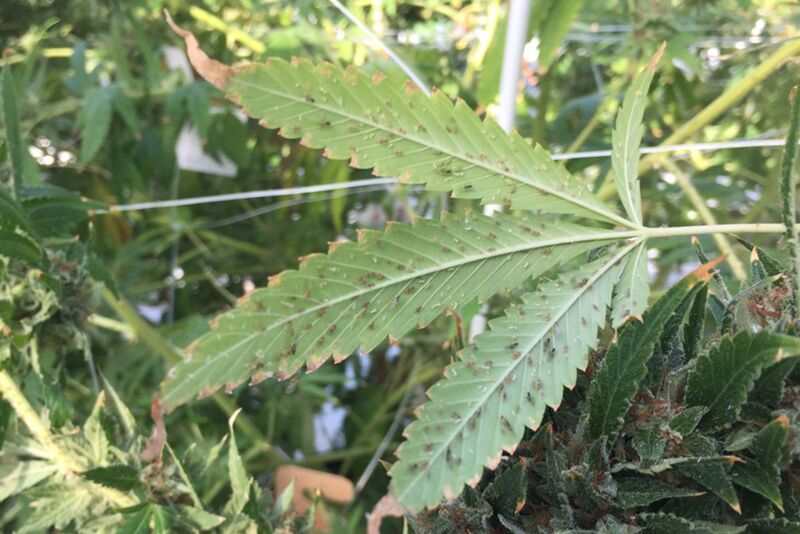
Over the last few years, biologicals have been found to work with varying results, so we suggest using methods, which will help evade this pest from entering your crop. All facilities should be screened to prevent the entrance of aphids and all measures to ensure workers do not bring in or transfer aphids from one room to another must be taken. If Aphids are found, they will need to be identified to ensure proper corrective action and then it is best to remove all infested material. To identify the cannabis aphid, read here: Six Ways to Identify the Cannabis Aphid
For Cannabis Aphids we have found that the following products do have some control:
- Aphipar-M (Aphidius matricariae)
You can use these products both as a PREVENTATIVE or CURATIVE application. All products will need to be applied every seven days until no aphids are found in the crop.
Aphipar-M is the parasitic wasps Aphidius matricariae. It works by parasitizing (laying eggs inside) live aphids. Once the aphid is parasitized, they will slowly die and turn into a greyish-brown, leathery mummy. The parasitic wasp inside the mummy will hatch two-three weeks after it has been parasitized. This cycle routinely occurs, removing aphids from the crop.
Chrysopa (Chrysoperla carnea) works an entirely separate way, known by the nickname “Aphid Lions.” They will search for their prey randomly, consuming their kill by grasping them from below, injecting them with a salivary fluid that digests the pests body content, which is then sucked out by the lion.
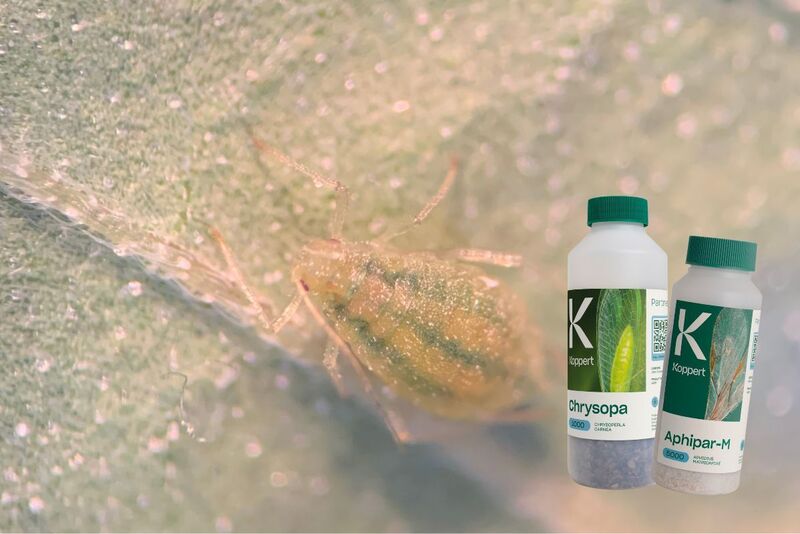
Root Aphids
For Root Aphids (Rhopalosiphum rufiabdominale), we have not been able to find a biological control product yet that will adequately dominate a pest population. If you have a root aphid infestation, and do not want it to spread or would like to ensure one does not develop, it is best to preventatively wrap “Reemay” on all plants in all stages of the crop. Then curatively treat drenching Botanigard and spraying insecticidal soap every 4-7 days.
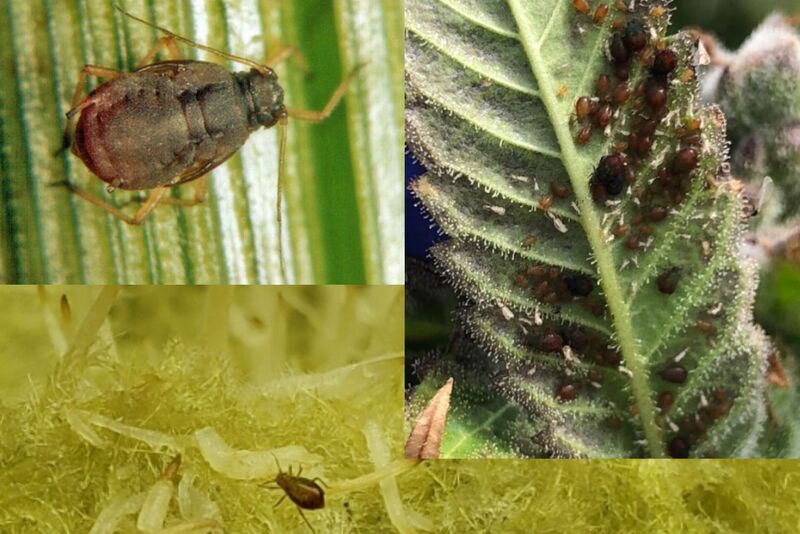
Other Pests
There are a few other pests that are known to appear in Cannabis crops, however they are usually unlikely to cause an issue, especially if you are already treating preventatively for thrips and spider mites. These pests include broad mites, hemp russet mites and whiteflies. Most generalist predatory mites (Swirski - Amblyseiulus swirskii and Thripex - Neoseiulus californicus) will take care of this situation.
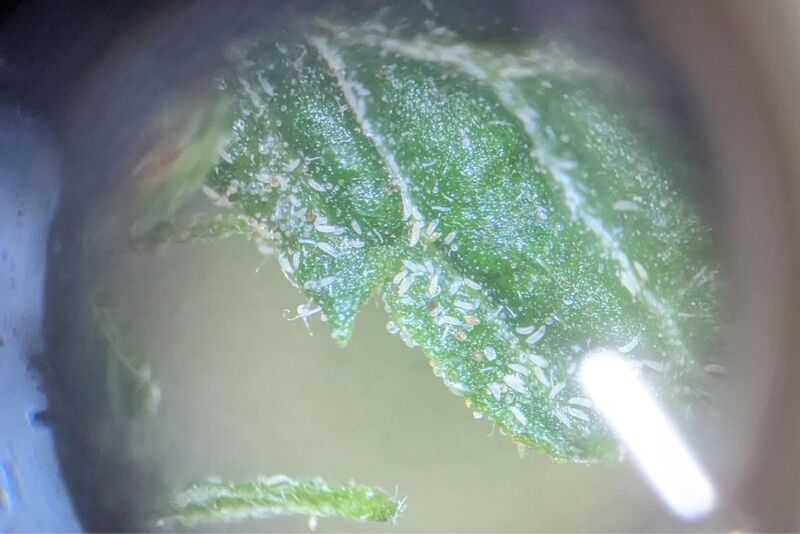
Conclusion
A blowout of insects in your cannabis crop can be avoided following the techniques explained above. Actively quarantining your plants, monitoring your rooms, and treating preventatively with bio-controls is necessary to not be surprised with a major pest infestation.